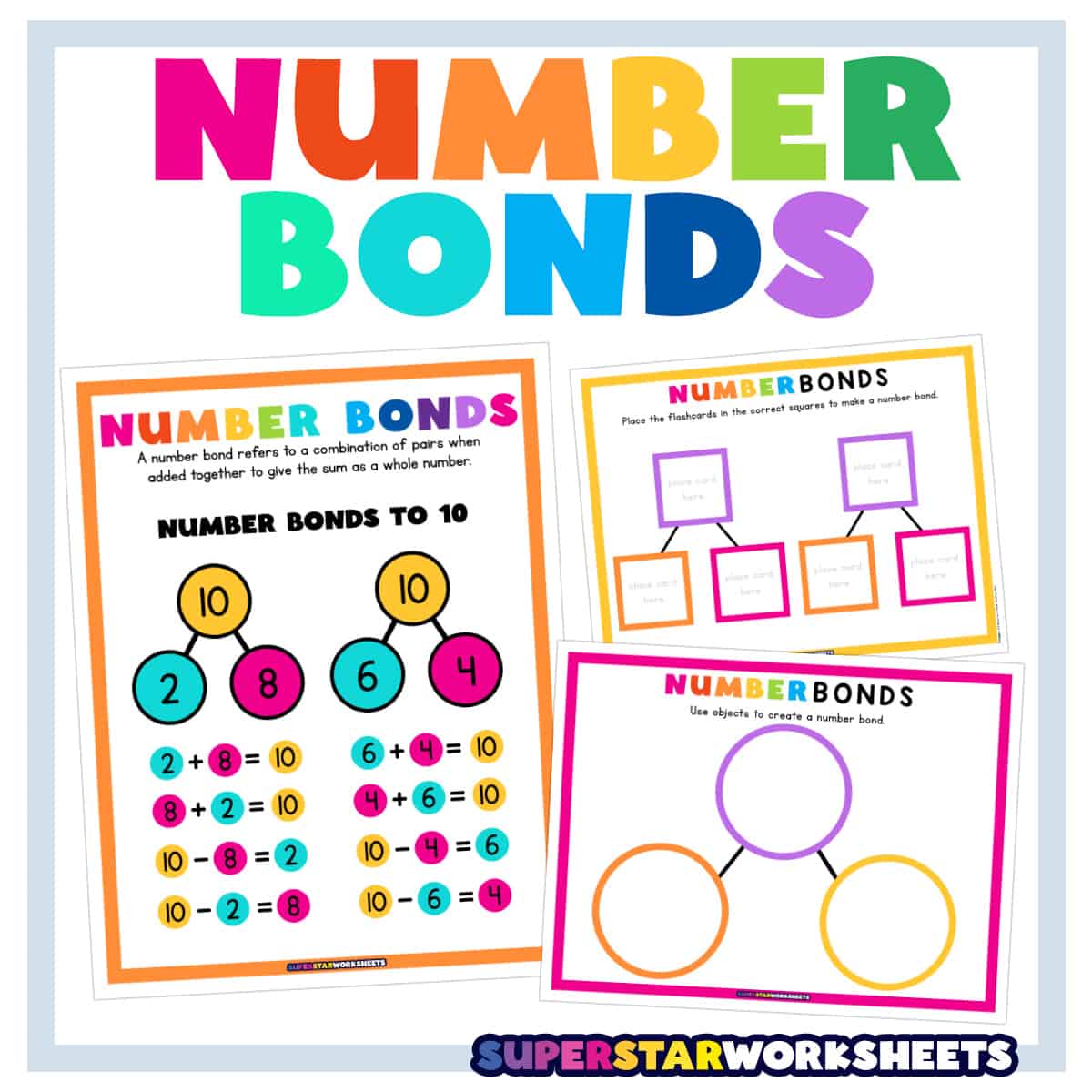
Number Bonds are a great visual for primary elementary students learning math! Number bonds are used to develop number sense, problem-solving skills, visualize addition, and subtraction equations. The following resources are free, printable PDFs that will support your young learners through number bonds. Grab these resources and pair them with our Interactive Math Curriculum for even more hands-on, engaging math fun!
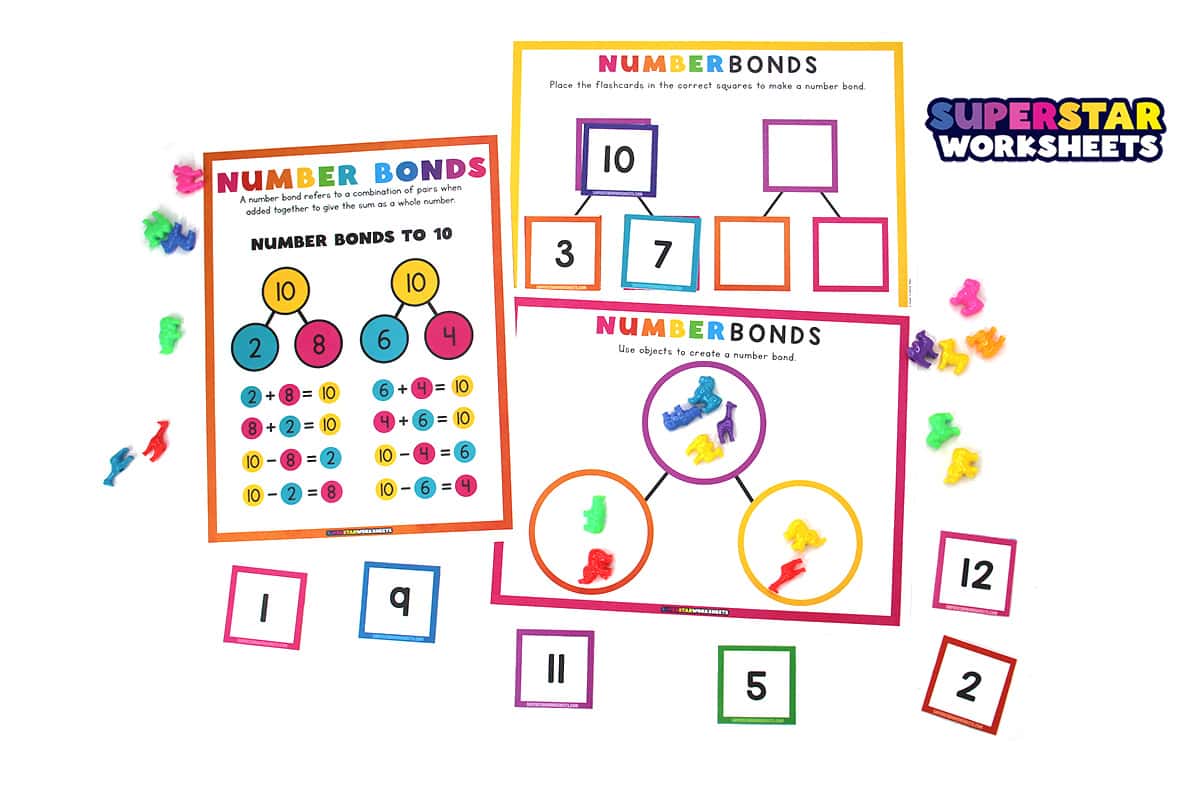
What is a Number Bond?
A number bond is a way to understand and show the relationship between numbers. It helps us see how a whole number is made up of smaller parts. We have many examples below to show you visually how to use number bonds in your classroom, math learning center, or homeschool setting.
For example, let’s say we have the number 10. A number bond for 10 could be represented by a circle or a box with the number 10 inside. This represents the whole number. See image below for a visual representation of a number bond of 10.
Inside the circle or box, we can split the number 10 into two parts. These parts, when added together, equal the whole number. For 10, we could have a number bond with the number 2 and the number 8. The 2 and 8 are called the parts of the number bond and are interchangeable when adding.
The number bond helps us visualize and understand that 8 is composed of 2 and 8. We can also see that if we add other parts together (6 + 4), it equals the whole number (10) too. There are so many possibilities with these fun number bond activities!
We can also see if we take the whole number (10) and subtract either 8 or 2, the remaining part (2 or 8, respectively), is the answer to the subtraction problem.
Number bonds are important because they help us with not only addition, but also subtraction and other math operations. By understanding number bonds, we can break down numbers and see how they are related to each other. It is the perfect first step in learning the parts of a whole as seen in our fractions charts.
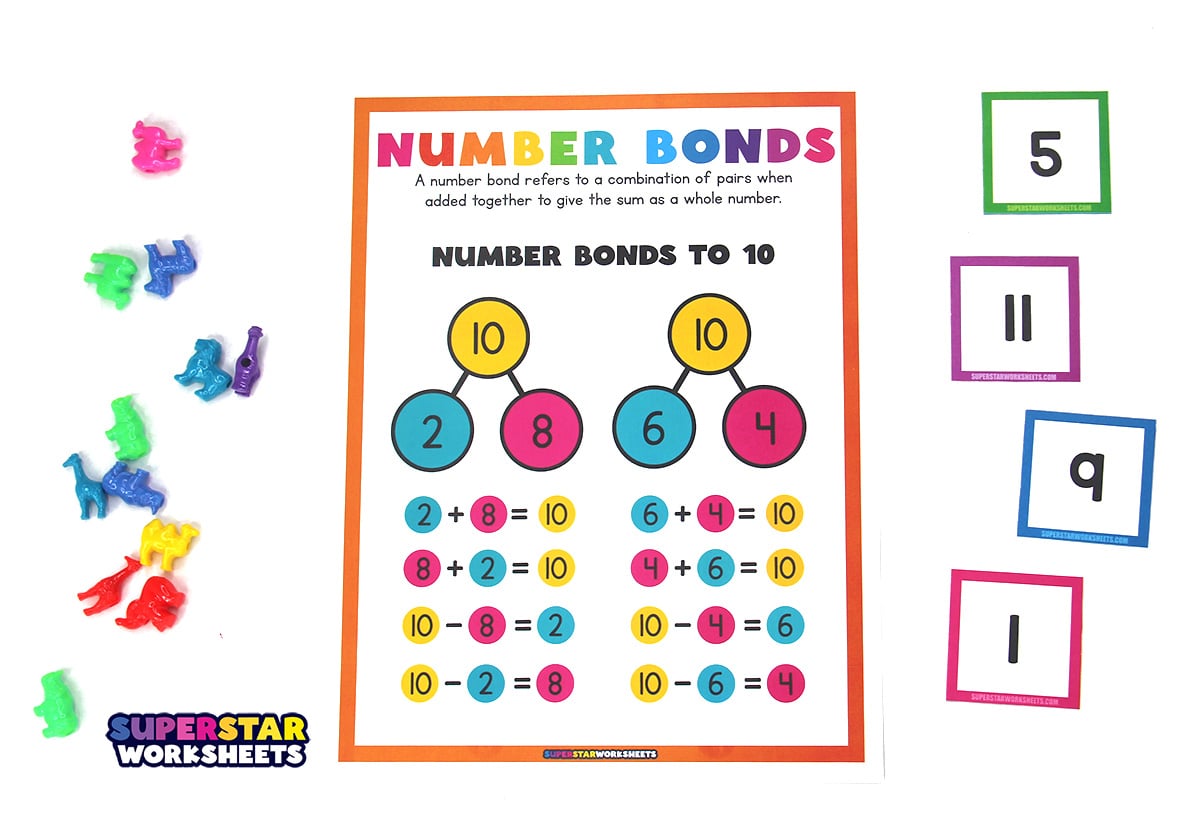
How to Use Number Bonds
Number bonds can be used in various ways to support mathematical understanding and problem-solving. Here are a few ways to use number bonds with your students:
- Addition and Subtraction: This visualization helps them understand the concept of addition and how numbers can be combined.
- Fact Families: Number bonds are useful for exploring fact families, which are a set of related addition and subtraction equations using the same numbers. These related equations help students see the connections between addition and subtraction.
- Decomposing Numbers: Number bonds can be used to break down larger numbers into smaller parts. This decomposition helps students understand the concept of place value and provides a foundation for mental math strategies.
- Problem Solving: Number bonds can be utilized to solve word problems. By using number bonds, students can visually see the relationship between the known and unknown quantities and solve the problem more effectively.
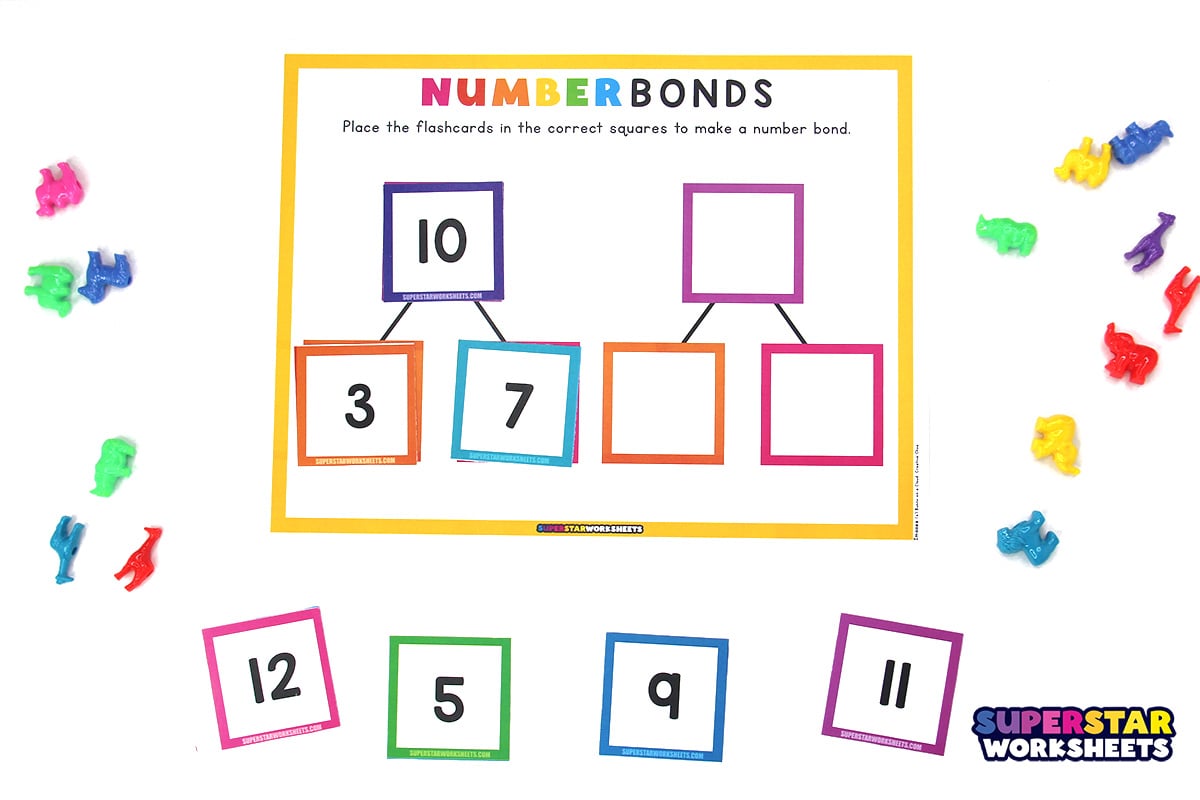
When to Use Number Bonds
Number bonds serve as a valuable tool for teachers and students to deepen their understanding of numbers, operations, and problem-solving strategies in mathematics. Teachers need to introduce number bonds when students are ready to explore and understand the concept of number relationships. The specific grade level or readiness can vary, but generally, number bonds can be introduced in the early elementary grades (K, 1, 2, and 3) as students develop a stronger understanding of numbers and arithmetic operations.

Number Bond Chart
Number bonds are a fundamental concept in mathematics that help students develop a deep comprehension of number relationships and arithmetic operations. Our Visual Number Bond Chart is thoughtfully crafted to provide students with a clear and engaging visual representation of this concept.
- Visual Chart
- Number Bonds
- Elementary Math
- Simple Addition and Subtraction
Number Bonds
Our free number bond activities help students to visualize their addition and subtraction problems. Making senes of numbers can be a difficult tsk, but using these printable is sure to help your students improve their number sense.
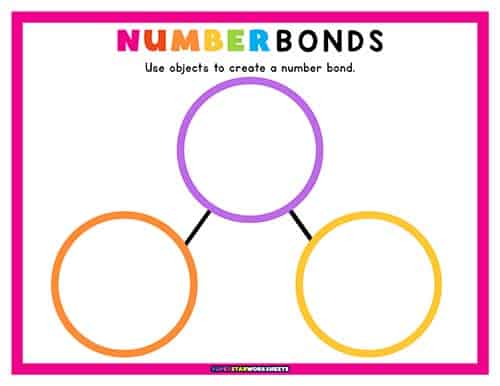
Number Bond Game
By using objects to create number bonds, students develop a concrete understanding of abstract mathematical concepts. They build a strong foundation for mental math, making connections that will support their mathematical reasoning in the future.
- Hands-On Learning
- Number Bonds
- Elementary Math
- Simple Addition and Subtraction
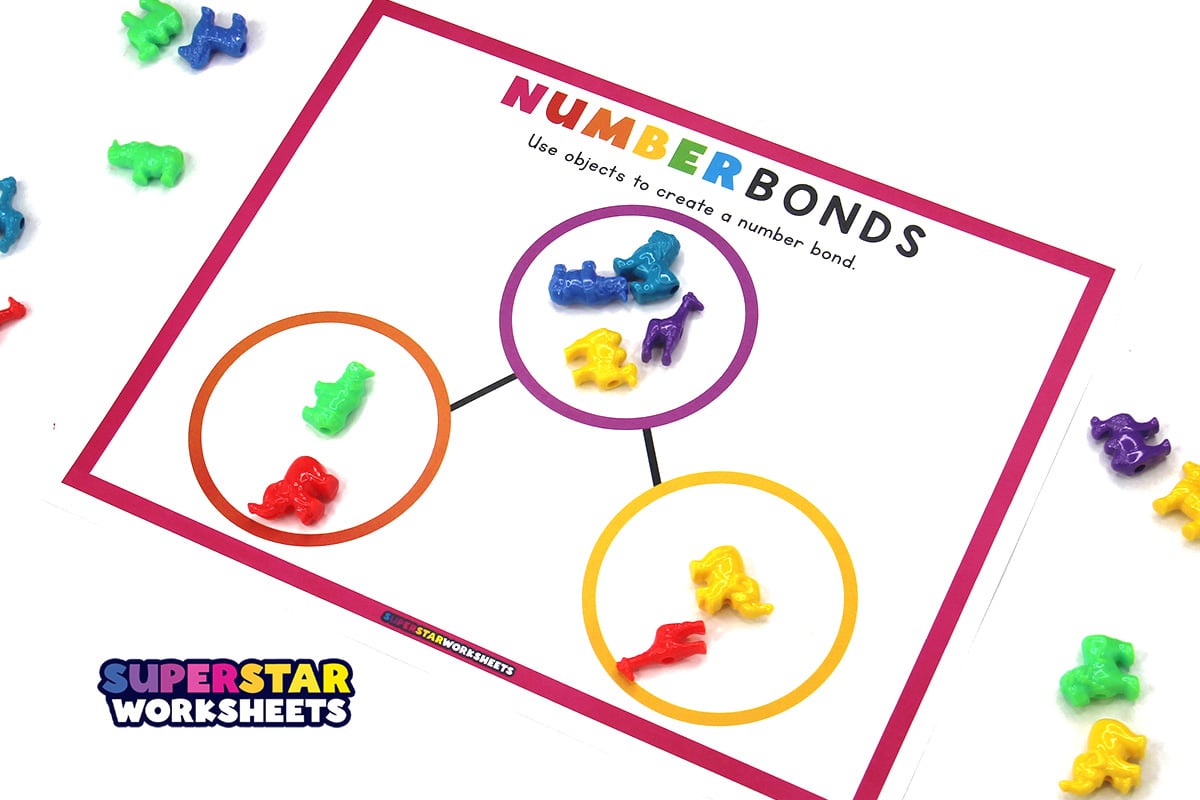

Number Bond Game Cards
A fun and engaging game to support students with addition and subtraction. This number bonds game is used with our number cards for student play. Help your students develop their addition and subtraction skills with this fun game.
- Math Games
- Number Bonds
- Elementary Math
- Simple Addition and Subtraction
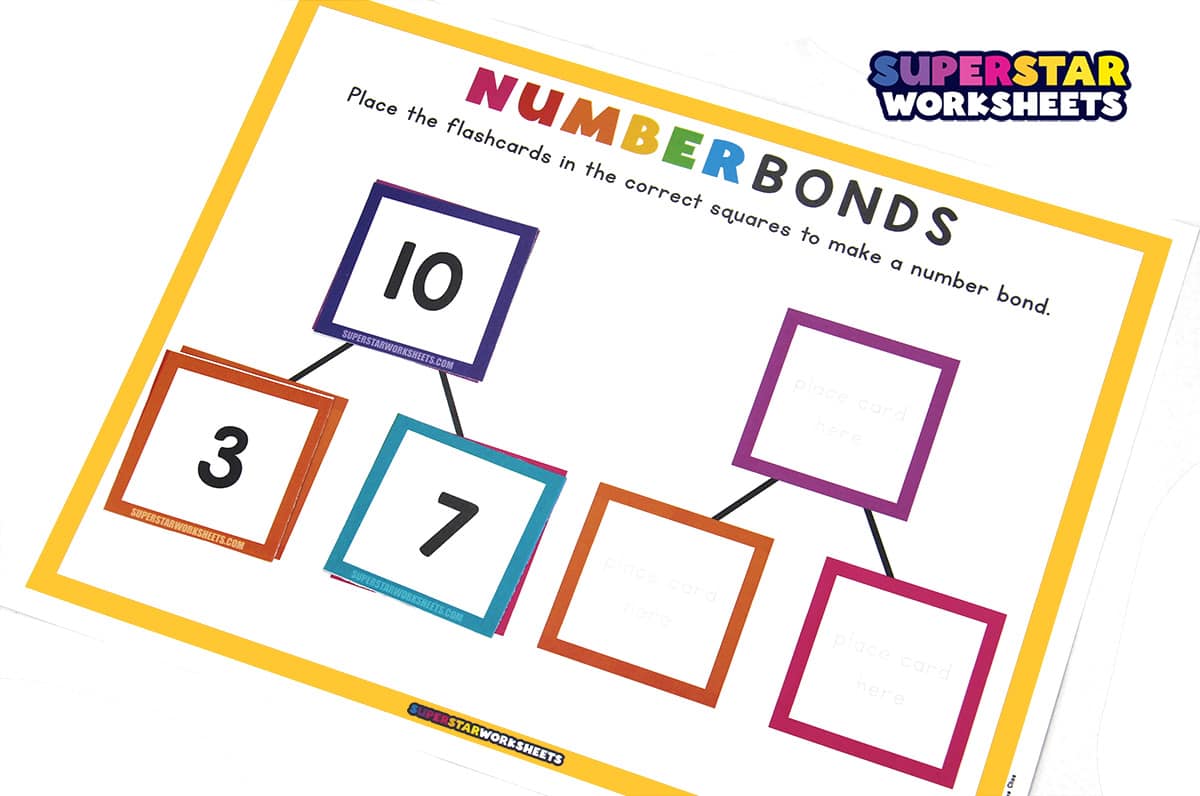
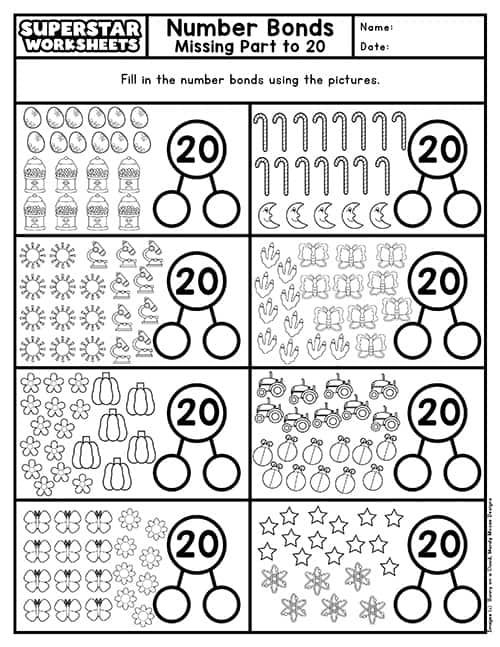
Number Bond Worksheets
Designed to help students develop their math skills and improve their counting abilities. Included in this set are anchor charts that break down the concept of part-part-whole addition and subtraction, printable worksheets practicing number bond counting, addition, and subtraction, and games that provide students with an engaging way of practicing their math skills.
- Math Concepts
- Number Bonds
- Elementary Math
- Simple Addition and Subtraction
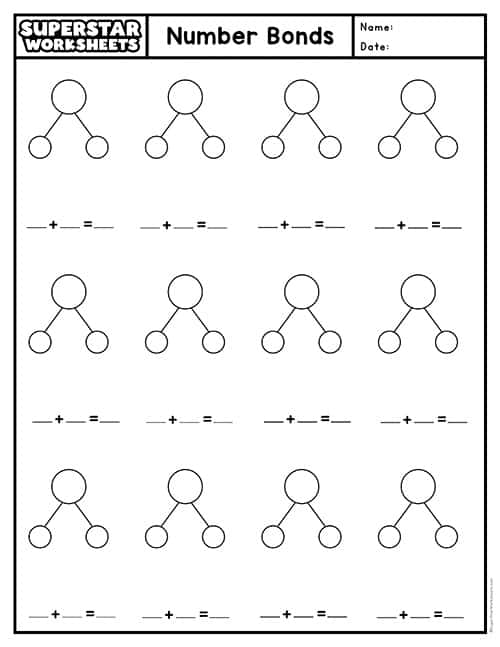
Number Bond Templates
Math worksheets that teach the part-part-whole method for adding and decomposing numbers. Decomposing numbers is an integral part of learning math. This skill is essential for students to have mastered before being able to discuss and dive into fractions.
- Math Concepts
- Part-Part-Whole
- Elementary Math
- Simple Addition and Subtraction
Interactive Math Curriculum
Interactive Math: Kindergarten provides a full year of hands-on and fun math activities and covers 4 days a week over 36 weeks. If you are looking for a program that excites your student(s), this program is designed to engage children while keeping the format easy and low-prep.
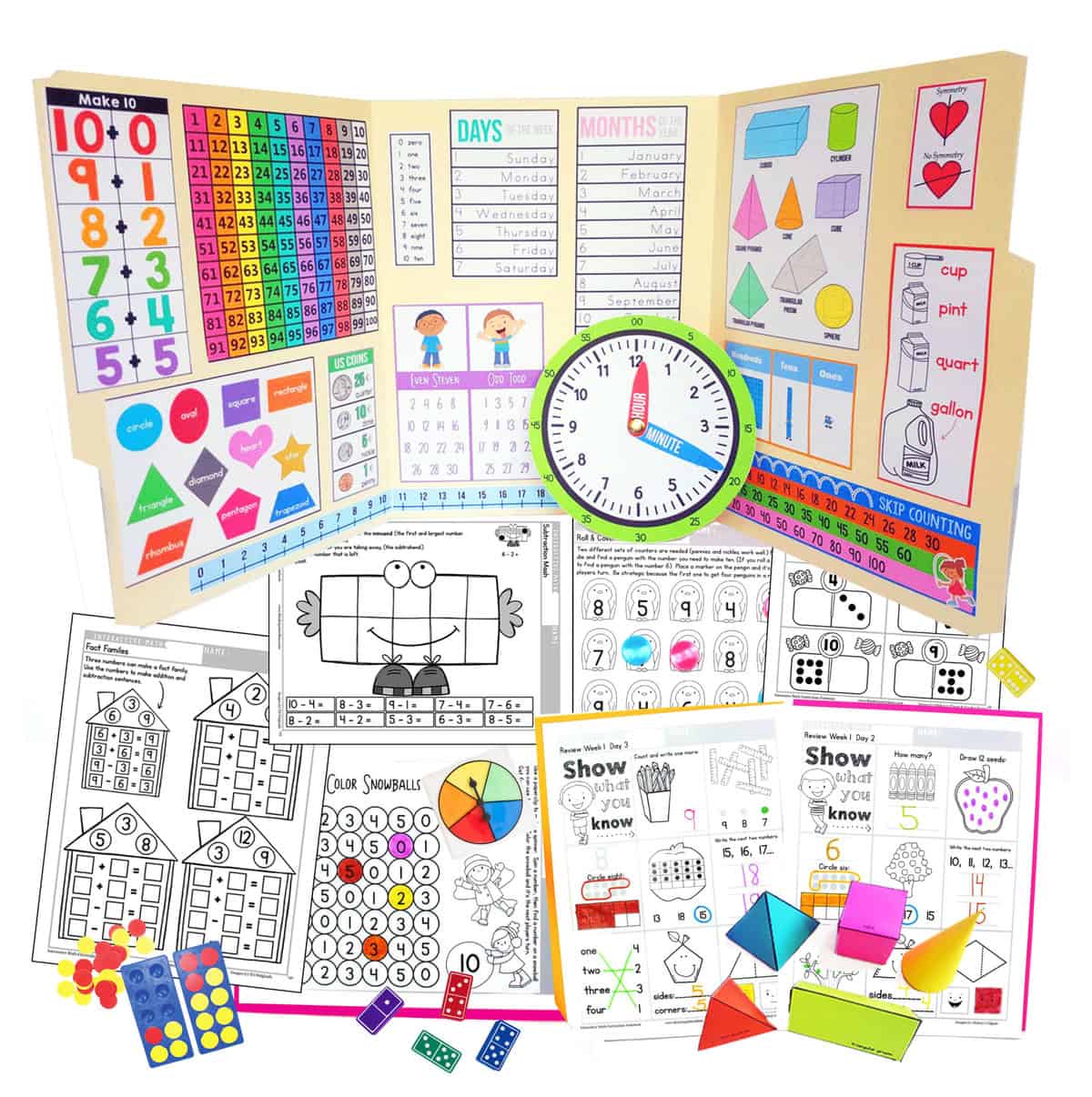
Other Resources You Might Like…
Your early homeschool and elementary students will love hands-on engaging activities! The following resources pair well with our Interactive Math program and feature a variety of early learning skills. Check them out today!

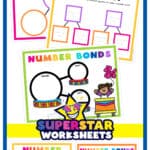
Leave a Reply